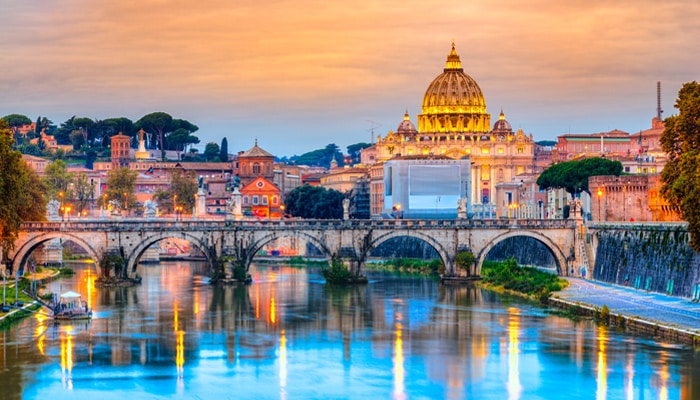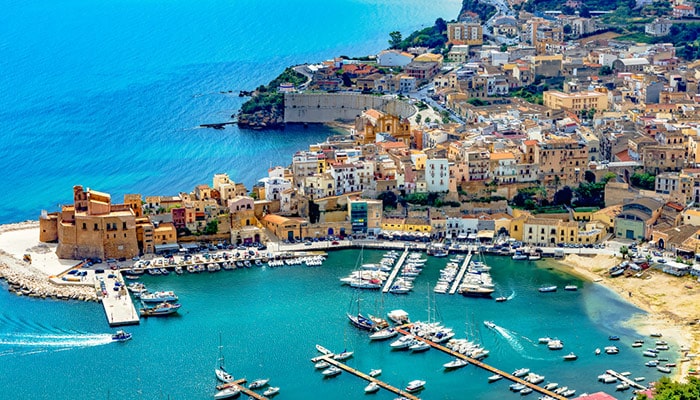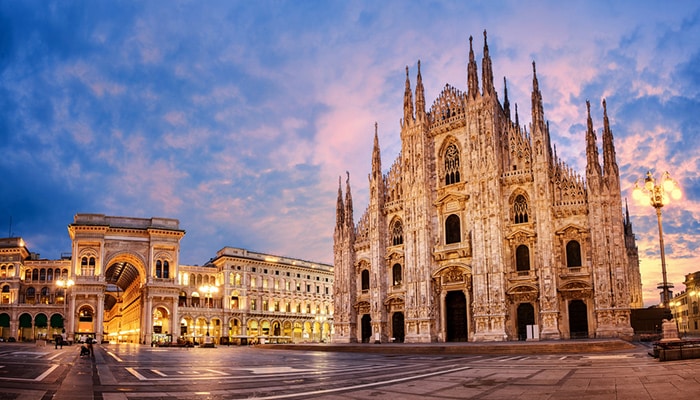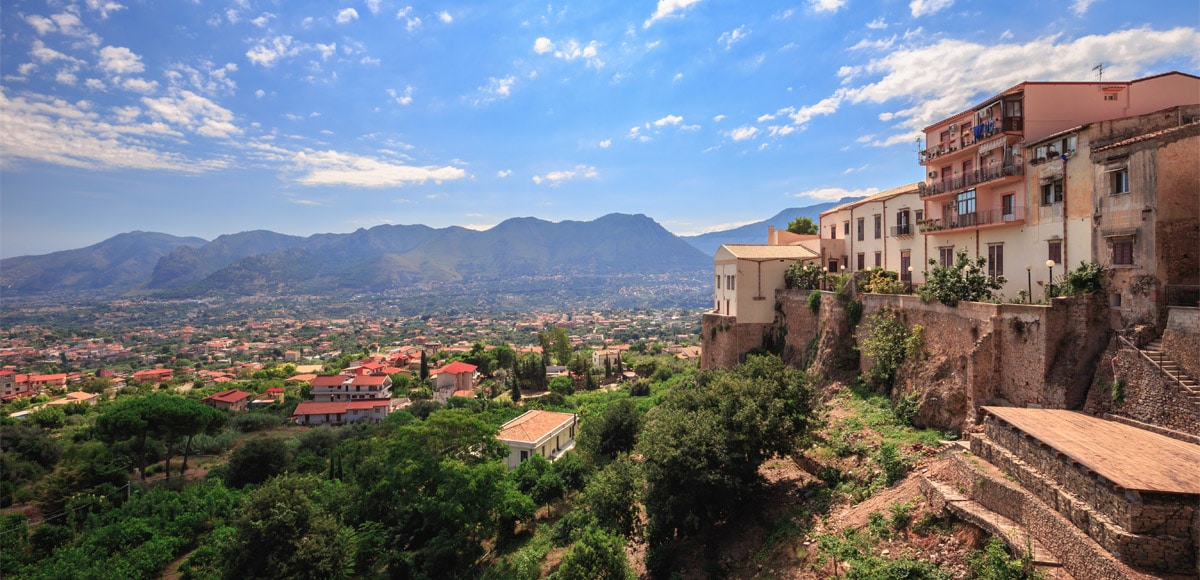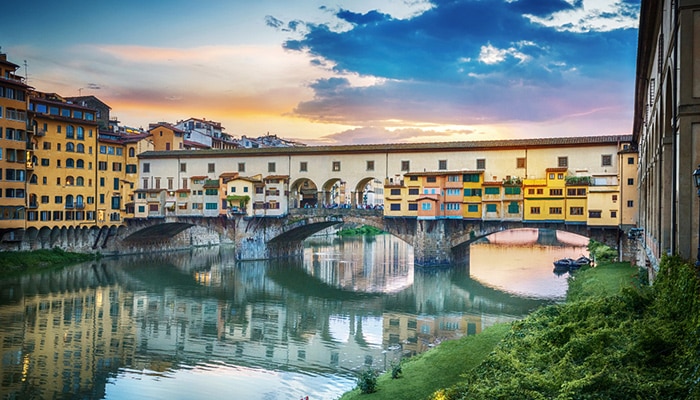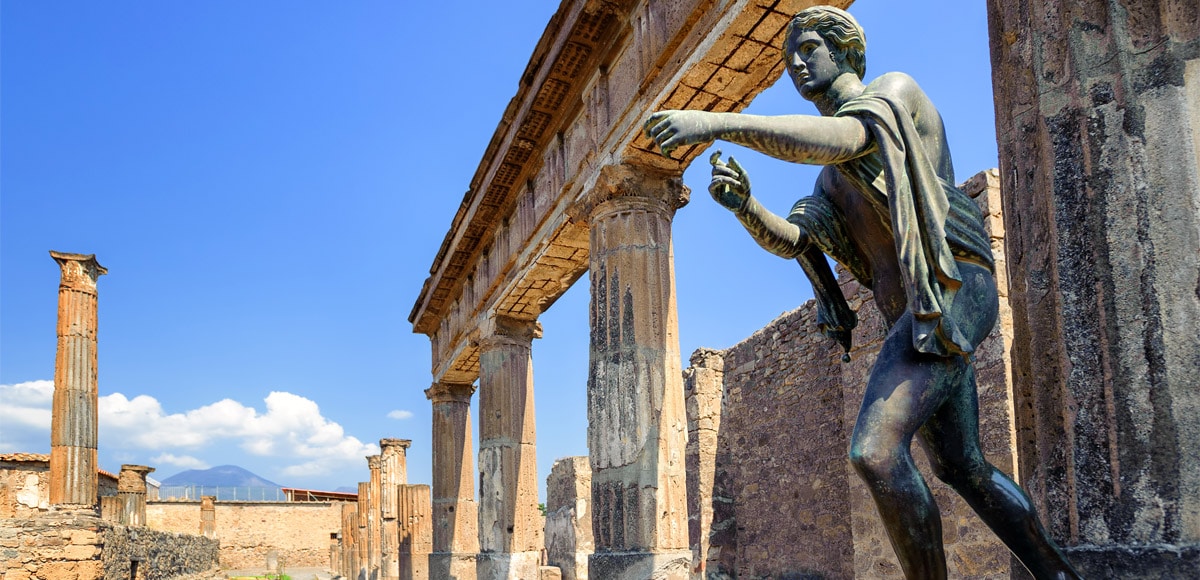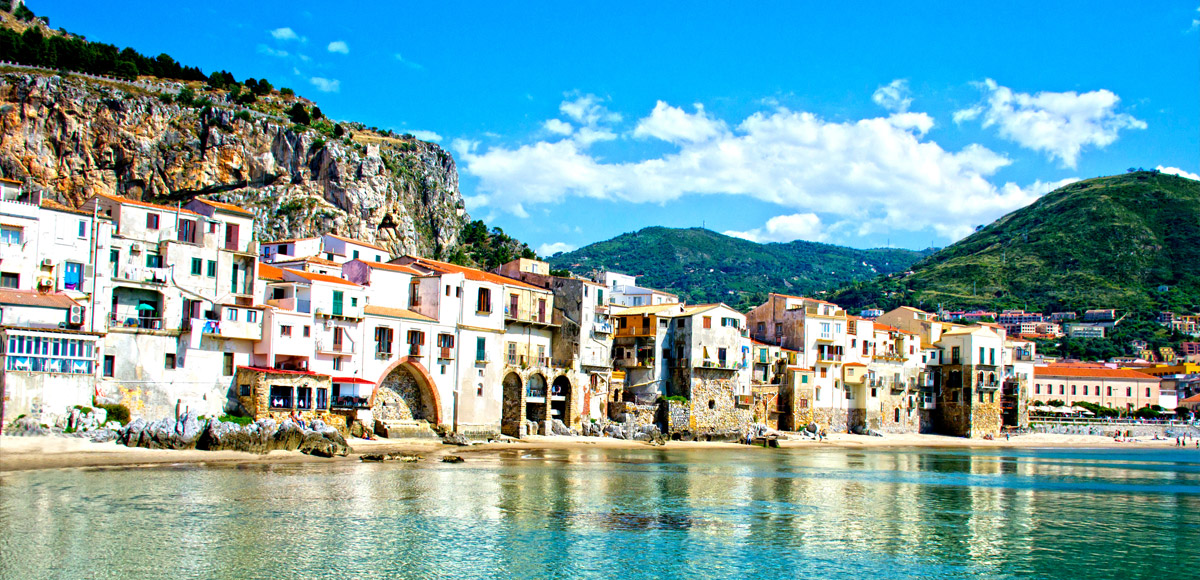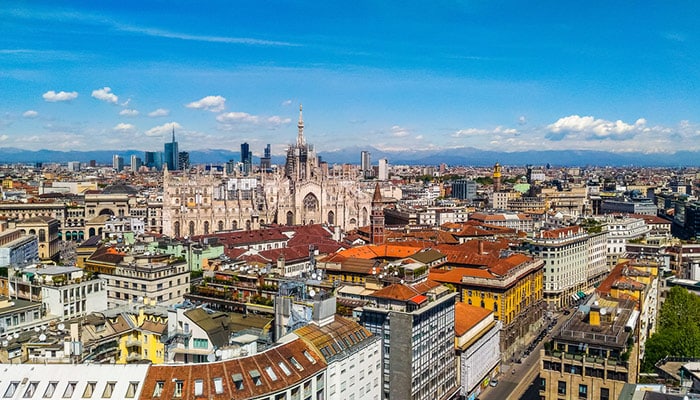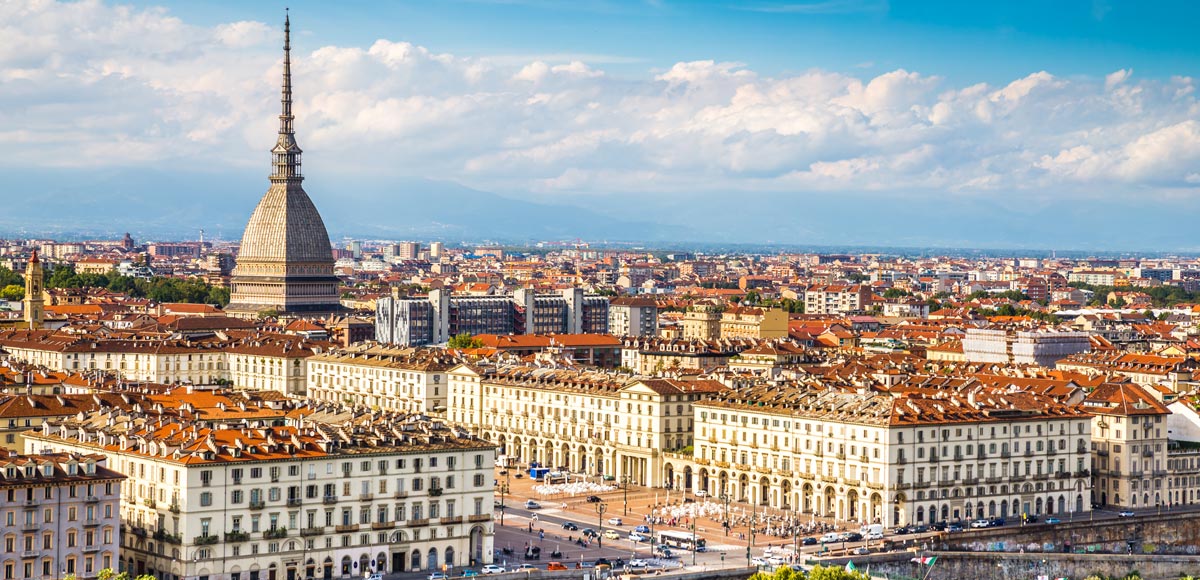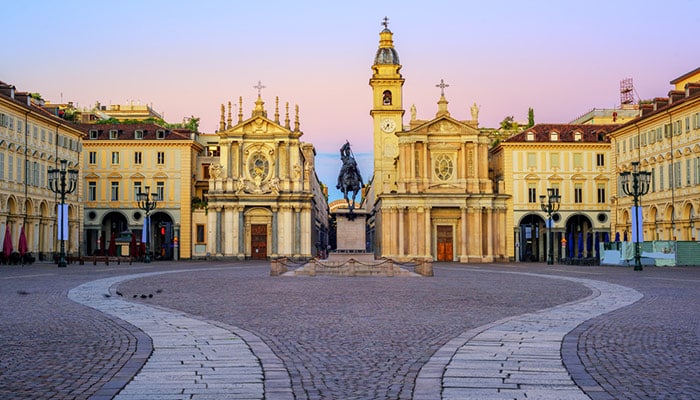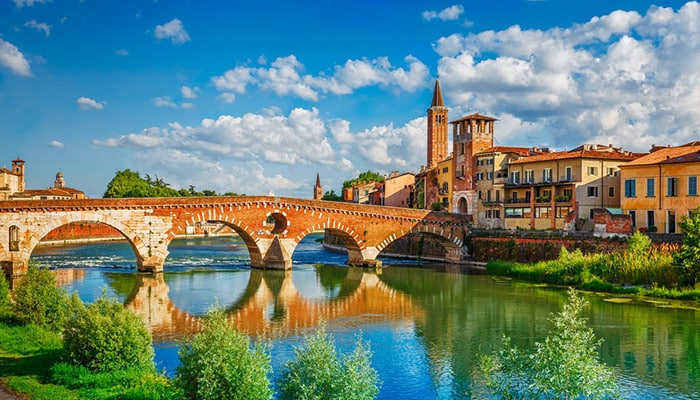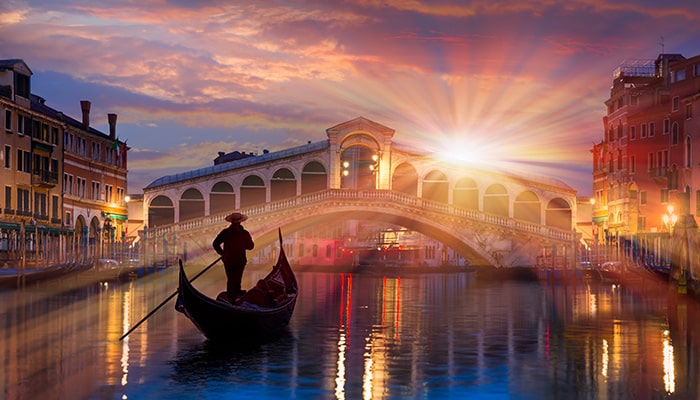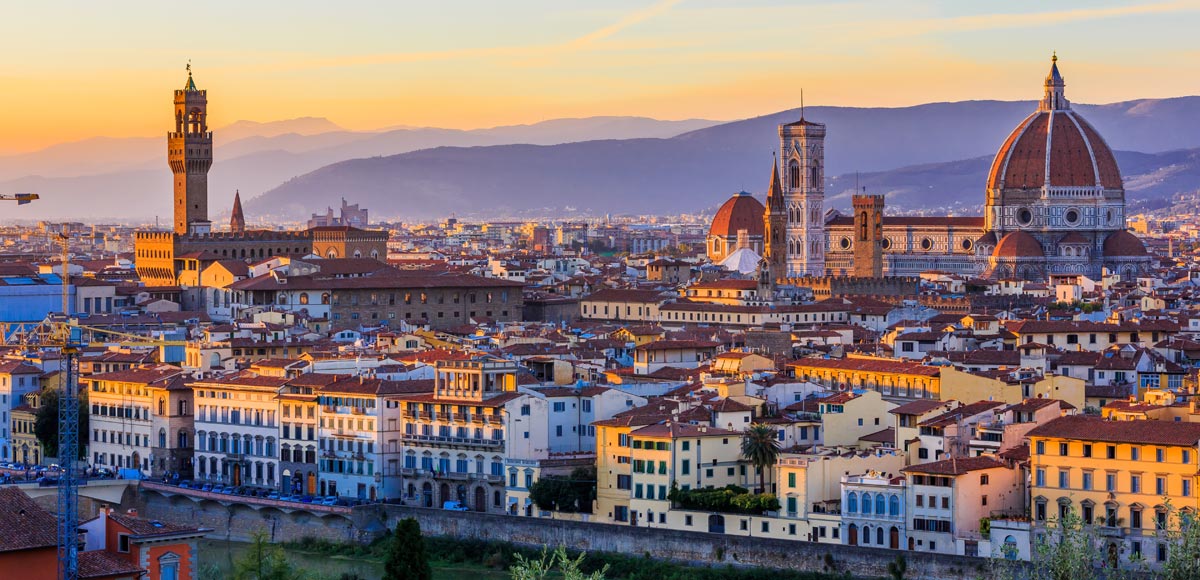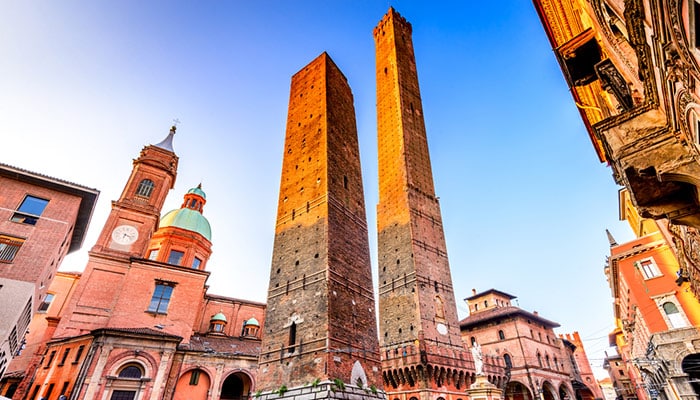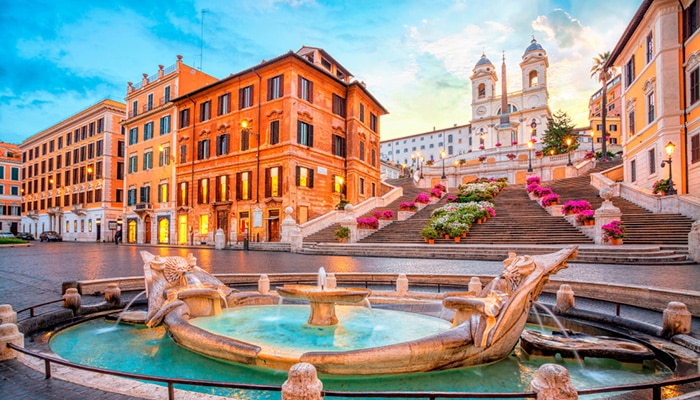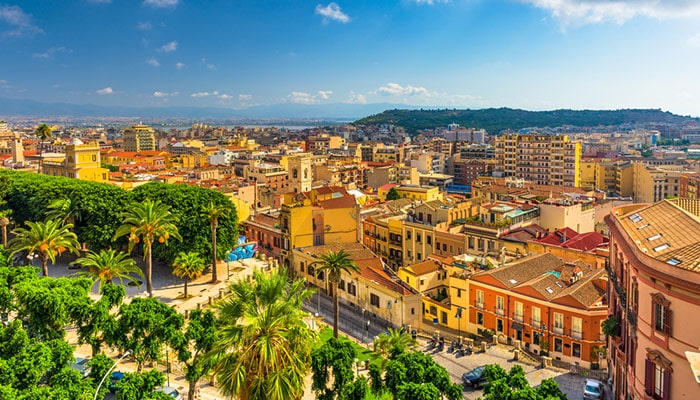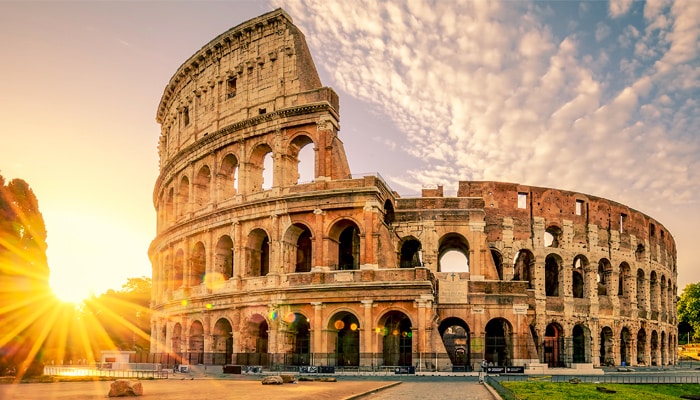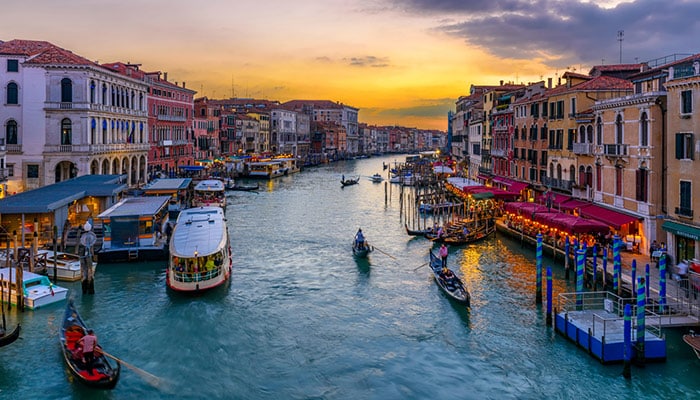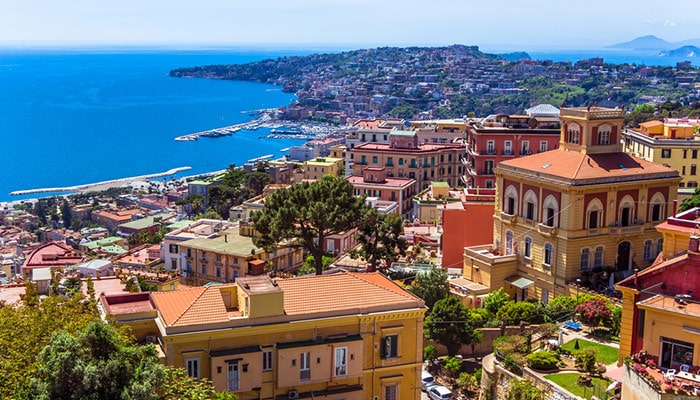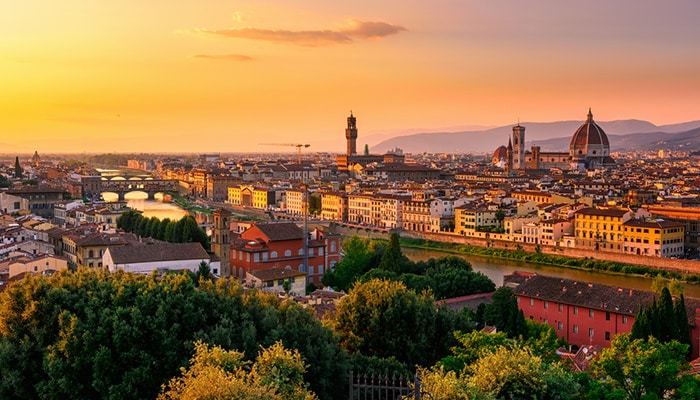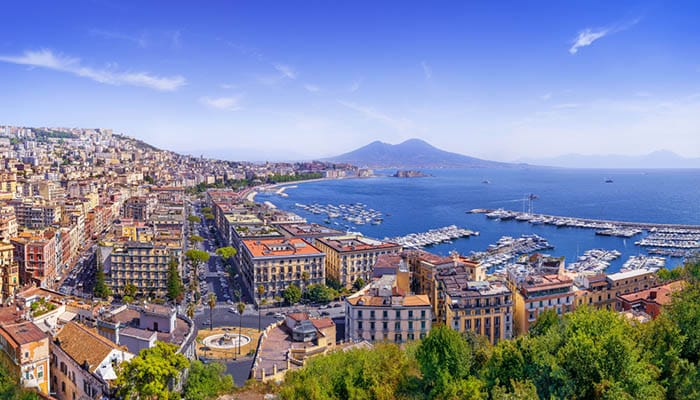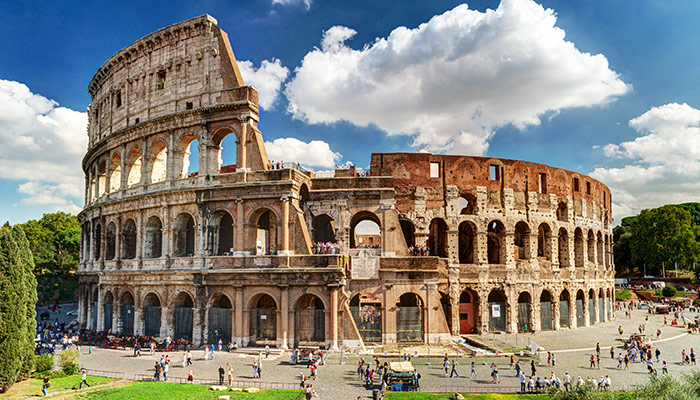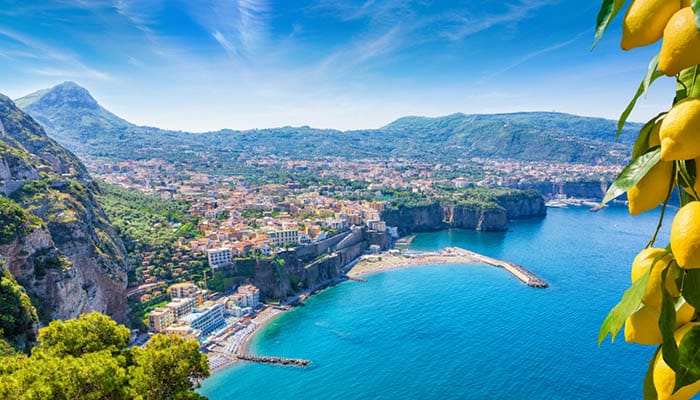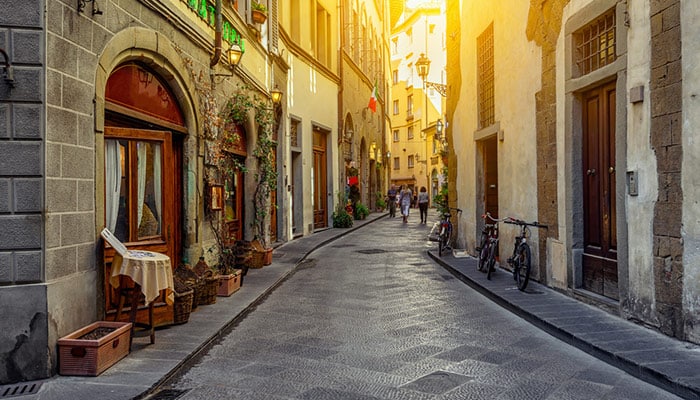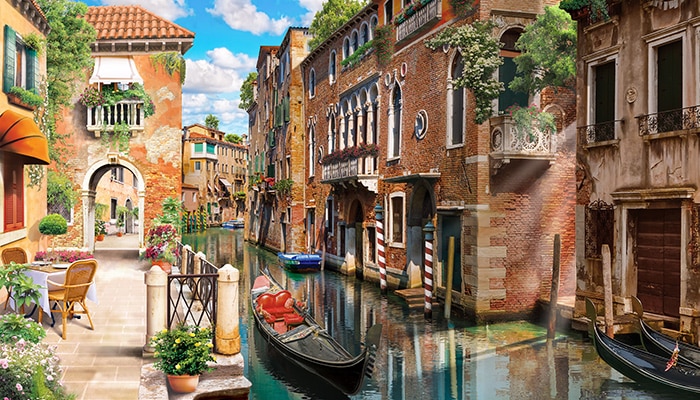
No Italian odyssey could possibly be complete without exploring both Rome and Venice. In the famed capital, you’ll wander under the soaring arches of the Colosseum and glimpse the babbling Trevi Fountain. Further north, the Grand Canal beckons as it snakes by the stunning dome of Saint Mark’s Basilica in a haze of gondolas and pastel-painted palazzos.
Ready to get stuck in? Great. This guide runs through all the ways you can cover the 250 miles that separates the towns, from Italy’s super-fast trains to old school bus routes.
| Transport | Time | Price | Tickets |
|---|---|---|---|
| Rome to Venice by high-speed train | 4 h | $32 | Book Online |
| Rome to Venice by plane | 1 h | $65 | Book Online |
| Rome to Venice by bus | 8 h | $16 | Book Online |
| Rome to Venice by car | 5.5 h | $120 | – |
Rome to Venice by high-speed train
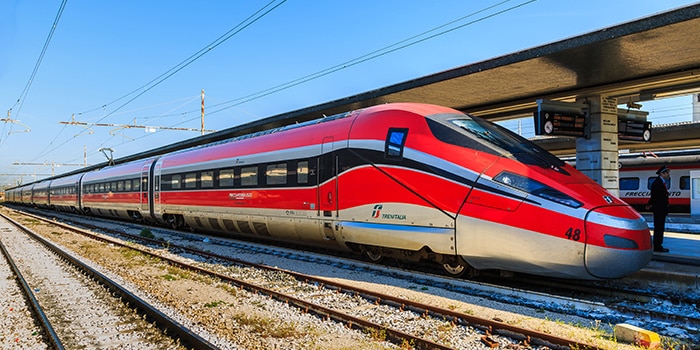
Time – 3 h 45 min
Price – $32
Comfort – 5/5
There’s no doubt about it – the high-speed Frecciarossa and Italo trains are among the most exciting ways to travel through Italy. They leave from Rome’s impressive Termini Station countless times per day, with plenty of routes linking to the northern cities. Some will be bound for Milan, others for Turin, but also lots for the wonderland of canals and palazzos that is Venice. From beginning to end, the route there will take just 3h45 on average.
Two operators currently compete on the route, albeit it with roughly similar offerings. There’s the state-owned Trenitalia and the private Italo. The first run stylish locomotives with four individual classes of travel, ranging from Standard (the most affordable) to Executive (perfect for business travelers who need to stay connected). The latter also have modern carriages with carpeted floors and oodles of legroom. The main difference is in the catering, with Trenitalia coming up trumps with menus of warm meals and Italian wine to keep you going.
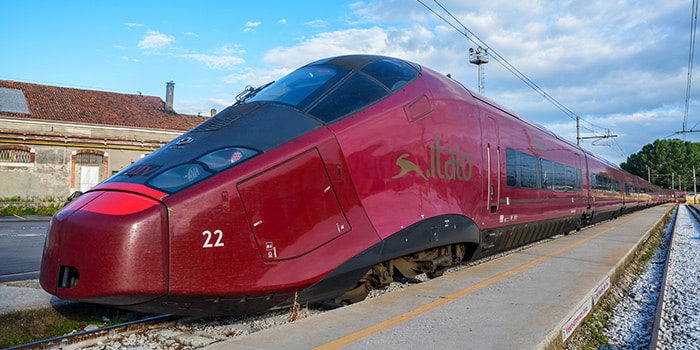
The high-speed train can travel at 190 miles per hour through the middle of Italy on the way to Venice.
The tracks will take you northbound on the way to Florence first, and then onto Bologna, before pushing across the wide and flat Po River plain to the tip of the Adriatic Sea. That means the most scenic portion of the trip is the initial step through Lazio and Tuscany, which can offer the outlines of the Apennine Mountains and the rolling vineyards of Arezzo. Also be sure to check for services that arrive into Santa Lucia station in Venice – it’s the closest to the main sights.
The quest for cheap tickets on this line really depends on getting in there as early as you can. There is an airline-style pricing model in place, so purchases on the day can be astronomical when compared to purchases made only months before. The best bargains should be around the $32 mark for the whole trip, which you can book online using 12Go.co.
Rome to Venice by plane
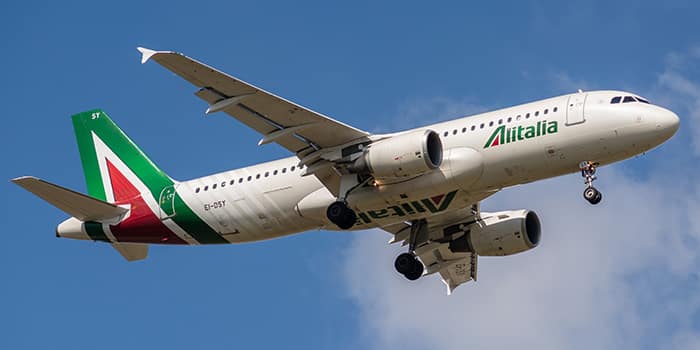
Time – 1 h 5 min
Price – $65+
Comfort – 4/5
If you’re not one for railway travels, then hopping on a flight is also an option for getting to the great Grand Canal. Of course, this one involves a little more hassle, adding in the need to get to Rome’s big Leonardo da Vinci International Airport (FCO) and then transfer to wherever it is you’re going from the arrival hall at Marco Polo Airport on the Venice side. The result? You’re probably looking at travel times in the region of about four or five hours in total (yep, the train is quicker from city to city!).
Flying to Venice is quick, but still might not beat the train on journey times or prices, so always check your options ahead of time.
The flight is a fast one, taking as little as an hour in the air once you’ve jetted off from Rome. For tickets, you should always book using 12Go.co as soon as possible, because prices go up and down, but usually skyrocket at the last minute. The best bargains are also likely to be Light fares, which means there’s a surcharge of $27 or more for any checked baggage.
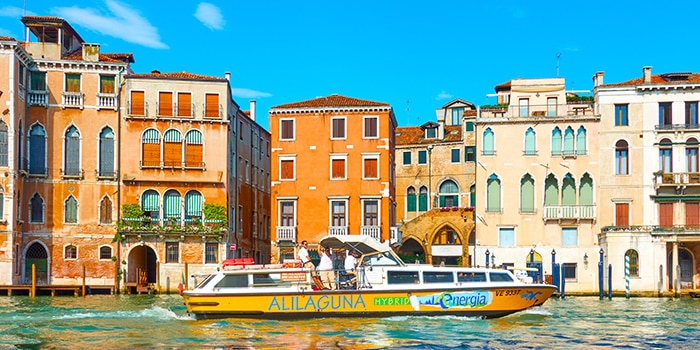
Getting to the airport on Rome’s side should be a cinch. There are direct trains from the huge Termini station every 15 minutes during the day, taking just 32 minutes and costing 14 EUR ($15.20) one way. Over in Venice, you’ve got other choices. The most adventurous transfer to the old city is surely on the Alilaguna water bus. It heads straight from the exit of the airport and over the lagoon, so you’ll see the church domes and Renaissance palaces approaching. The cost is 15 EUR ($16.30) per person. There’s also a direct bus connecting to Piazzale Roma that costs just 8 EUR ($8.70).
Rome to Venice by bus
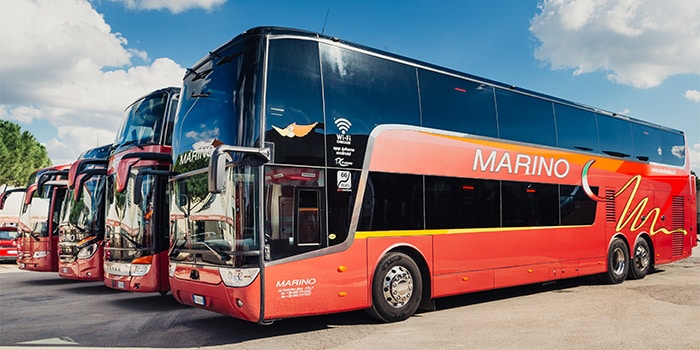
Time – 8 to 12 hours
Price – $16+
Comfort – 3/5
If budget concerns beat being in a hurry on your Italy trip, the bus is definitely worth considering. If you book these long-distance coaches far in advance, they can have prices as low as $16 for the entire A to B. That will leave more money for your Proseccos on the piazzas than both the high-speed train and the plane, which begin at at least double the cost.
Buses are the budget-friendly choice on this route, coming in at just $16 when purchased well in advance of your Venetian holiday.
Of course, there are some sacrifices you’ll have to make. For one, the journey time on the bus is anything from eight to 12 hours. That’s not ideal considering the locomotives do the hop in just under four. What’s more, even with the up-to-date vehicles offered by the leading coach providers – Flixbus, for example – the trip isn’t going to hit the same levels as comfort as some of the alternatives (there’s no onboard bar or food cart for starters!).
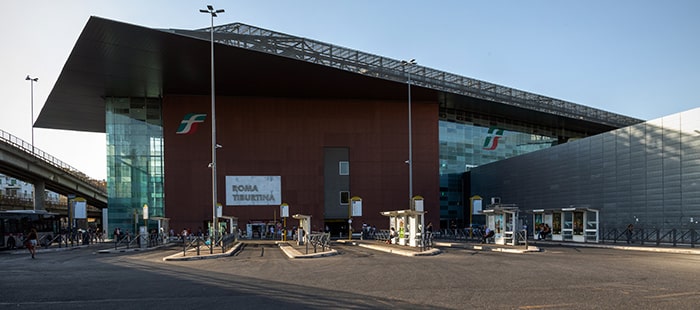
Some good news is that buses do go directly between Rome and Venice (there are stops but there’s no need to change). They typically begin in the Roma Tiburtina station on the far east side of the capital. They’ll arrive in either Tronchetto (the best place for getting to the old city of Venice) or the new town of Mestre on the mainland of Italy.
Rome to Venice by car
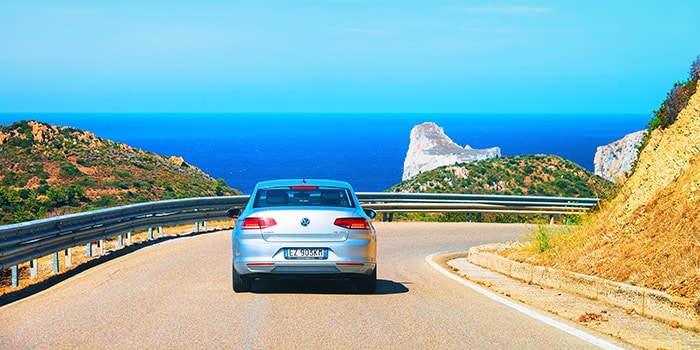
Time – 5.5 hours
Price – $120
Comfort – 4/5
Feeling adventurous? You could leave the Eternal City and drive the heartlands of Italy yourself. All you’ll need to do is organise a hire from RentalCars.com if you don’t already have your own ride. Then, hit the autostrade going northwards. The roads are mostly of excellent quality on The Boot, allowing speeds of up to 130 kph. That means you could cover the whole 330 miles of highway that separates the cities in just 5.5 hours if you wanted.
But that’s not how we’d do it. We’d take a couple of days to explore the amazing sights and places that await en route. They include the charming Umbrian hill town of Orvieto, the glistening lake waters of Trasimeno, the rich art collections of Florence, and even the backbone of the rugged Apennine chain. The cost of a rental car to cover all that could be in the region of just $120 or so, though you’ll need to pay more to drop the car off in a different spot to where you collected it.
Venice’s winding canals and bustling piazzas, romantic gondolas and glass-blowing workshops await at the end of this trip up the spine of Italy. That should be plenty to get excited about as you travel!
Rome to Venice FAQ
Ditch the train and skip the plane, because the bus is the way to go if you’re looking to save money for your Veneto wines. They can cost as little as $16, but that’s only when you book in advance, so be sure to head over to 12Go.co and get searching your travel dates right away!
Don’t be fooled by that zippy 1 h 5 min flight time, because the trains actually work out as the fastest way to go from city to city. Of course, that’s only when you add on the time it takes to get to and from the terminals and check those bags, so it might not be the case if you’re aiming to get to the Dolomites or the winelands north of Venice rather than the canal-covered center.
Like most Italian locals, we’d throw in with the train. Not only is it a fast way to go from the Colosseum to the Grand Canal, but it also shouldn’t cost too much when you book tickets in advance using 12Go.co (around $32 is normal). What’s more, the carriages are spacious and air conditioned, with onboard food carts with Italian red wines in stock. Cheers!
Tickets on the train services that whiz at 300 kph between Rome and Venice start selling for around the $32 mark. That’s the advance fare, which is only available for a short period between 60 and 90 days prior to departure. After that, you could pay double or even triple for the same seat! (See why we recommend searching 12Go.co as soon as possible?).
Yes, and it’s a wonderful way to travel between the cities. The whole thing starts with sweeping views of the Apennines and the Tuscan hills, followed by pitstops in Florence and Bologna, before crossing the Po River in the runup to Venice. In total, you’re looking at trips of between 3.5 and 4.5 hours, on trains that can hit velocities of 300 kph.
You can, however most tour companies will make use of the high-speed train links to transport you to the canals. That means prices for packages will vary, just as they do with the locomotives themselves. What’s more, you’ll be on a tight schedule, what with nearly four whole hours of the day set aside for the transfer to Venice itself. Remember there are myriad palaces, haunting churches filled with paintings by the likes of Tintoretto, glass workshops in Murano, and loads more to pack into the day!
How useful was this post?
Click on a star to rate it!
Average rating / 5. Vote count:

